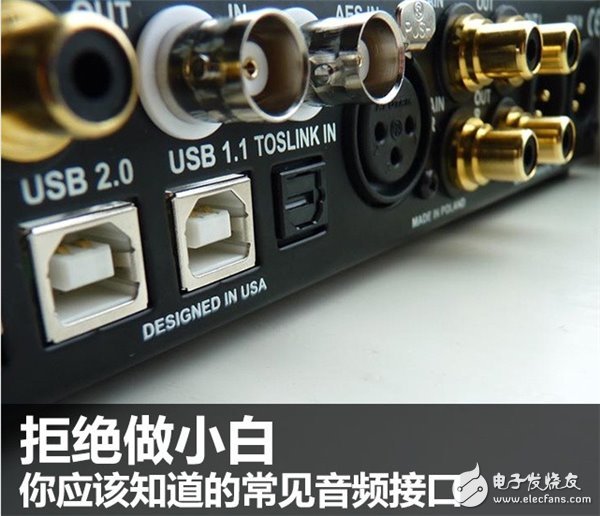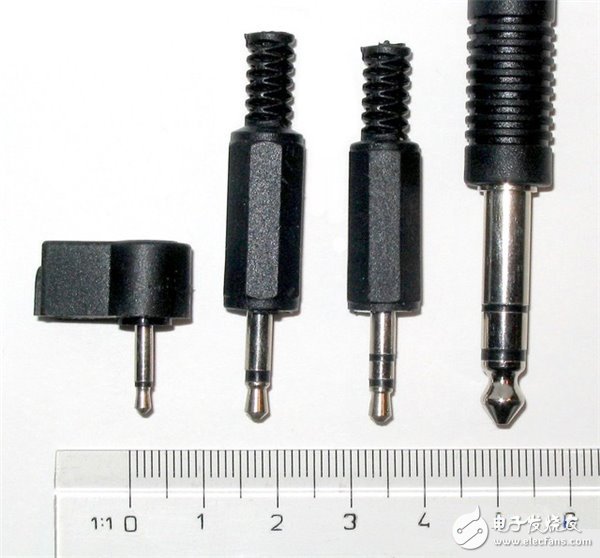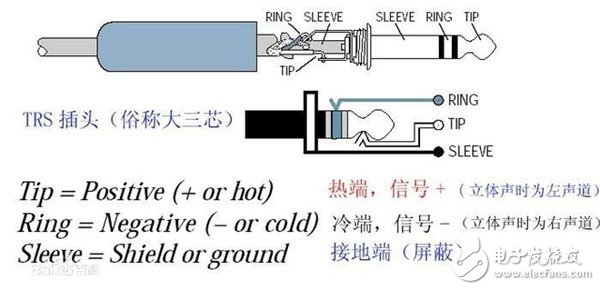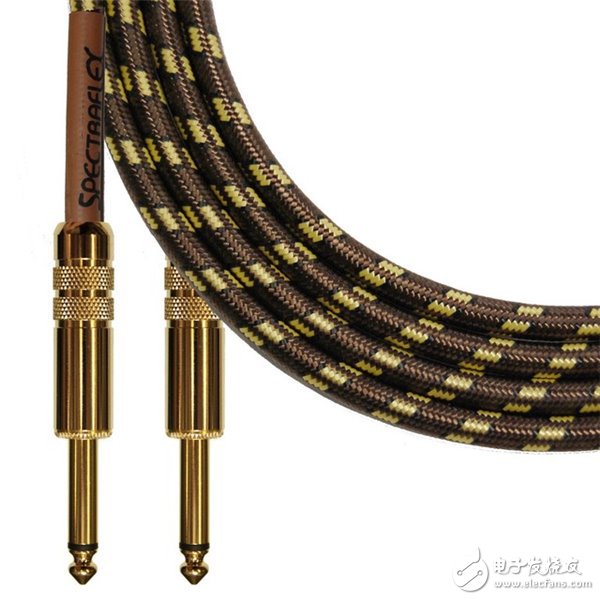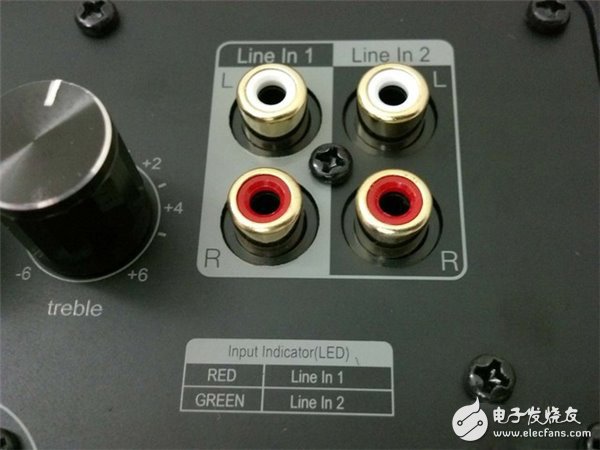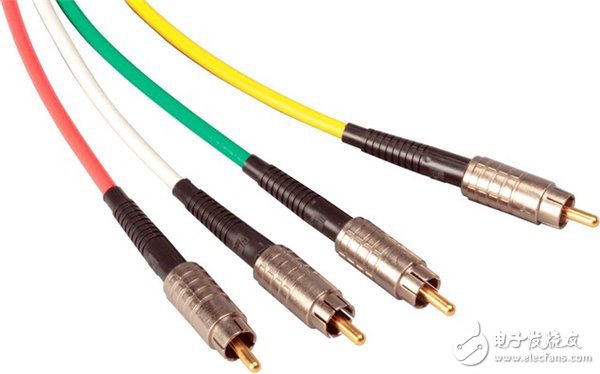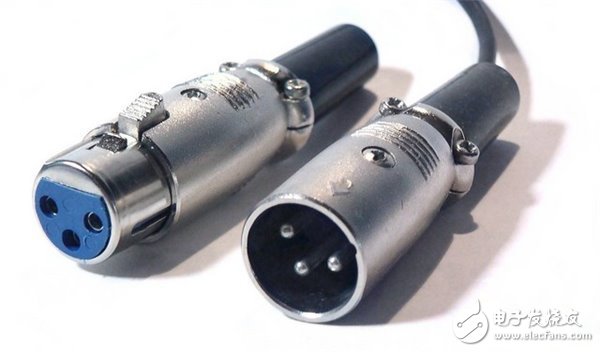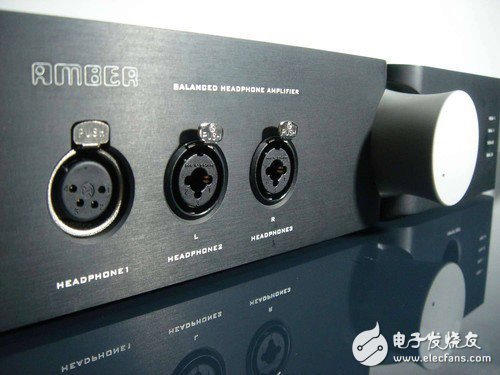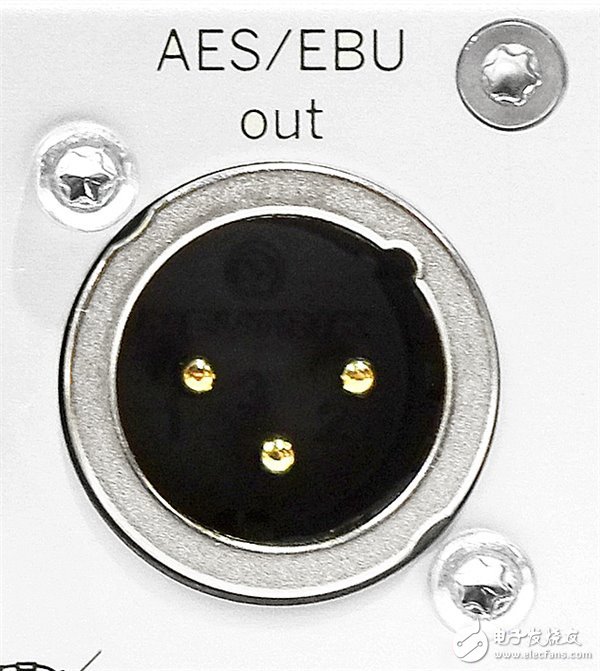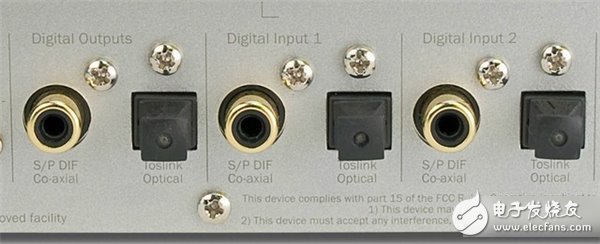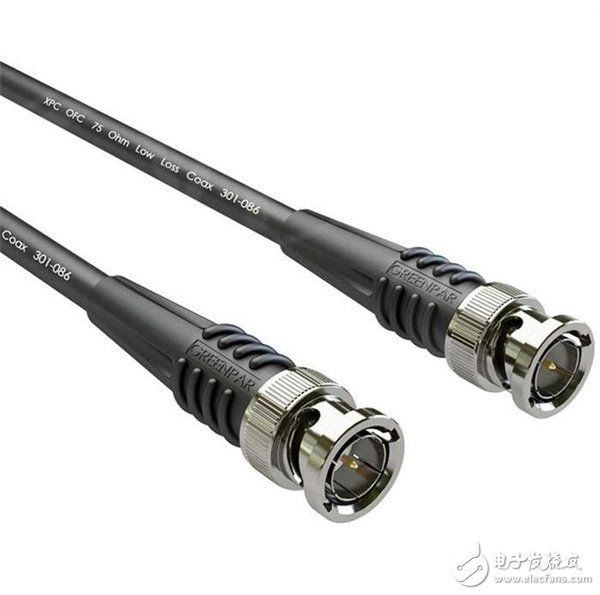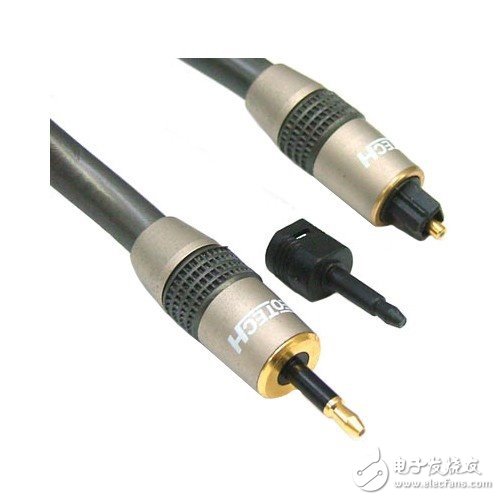In daily life, electronic audio equipment has a close connection with our ordinary computer, radio and even home theater, and external audio playback of movie TVs. If you are giving you a bunch of audio cables and various audio interfaces now, but you will not connect the interface cables correctly, then you are really out. The audio interface mainly includes analog TRS interface, RCA interface, XLR interface, digital audio interface AES/EBU interface, S/PDIF interface, RCA\BNC coaxial interface, optical fiber interface and so on. The author has always emphasized that before using digital products, it is necessary to develop the habit of reading the manual. Only by understanding the manual can the function of the machine be understood in the actual operation, and the unnecessary operation of the machine due to misoperation is avoided. damage. But now many people are reluctant to take the time to read the manual, so there will be confusion when faced with things like distinguishing audio interfaces. In fact, if you are constantly in contact with these devices, you will gradually become familiar with the audio interfaces that look very complicated. Usually, there will be corresponding English labels on the side of the interface. If you encounter a relatively unfamiliar device and have some new features. , then you need to read the instructions carefully to identify and operate. This time we introduce some common audio interfaces for you. What needs to be explained here is that the interface we are talking about actually includes a discussion of the two aspects of "interface" and "connector", which we usually call "joint" or "connector". plug". "Interface" defines the physical characteristics of the connection between electronic devices, including the frequency and strength of the transmitted signal, and the type and number of corresponding connections, as well as the structural design of the plug and socket; and the "connector" is physically A device that implements the connection between devices. Speaking of the TRS interface, the average person may not know what it is at first sight, but as long as the object is placed in front of it, everyone knows what it is. In fact, the most we see in daily life is the TRS interface. Its connector appearance is cylindrical. It usually has three sizes 1/4" (6.3mm), 1/8" (3.5mm), 3/32" (2.5mm). ), the most common one is the 3.5mm size connector. Different size TRS connectors The 2.5mm TRS connector has been popular in mobile phone headsets, but it is rare now. The headphone jack is basically dominated by the 3.5mm interface. The 6.3mm connector is more common in many professional equipment and high-end headphones, but now many high-end headphones have gradually changed to 3.5mm connectors. The meaning of TRS is TIp (signal), Ring (signal), and Sleeve (ground), which respectively represent the three contacts of this joint. What we see is a three-section metal column separated by two pieces of insulating material. Therefore, 3.5mm joints and 6.3mm joints are also known as "small three cores" and "big three cores". "big three core" structure The TRS interface is a circular hole with an internal corresponding to the joint and three contacts, which are also separated from each other by an insulating material. Some people say that there is no four-pin plug? Yes, we have a four-pin plug that we see on headphones or a Walkman. The extra core is used to transmit voice signals or control signals. In addition, a four-core 3.5mm plug for headphones is used to transmit balanced signals. The 6.3mm "big three core" plug can be used to transmit balanced or unbalanced stereo signals, which means it can transmit balanced signals like the XLR balanced interface we will talk about later, but the cost of making such a balanced line is relatively low. High, so it is generally only used in high-end professional audio equipment. Two core 6.3mm TRS electric guitar line Of course, since you can add a core, you can also reduce the core. The two-core TRS connector can be used to transmit unbalanced mono audio signals. For example, the electric guitar cable is a two-core TRS cable. Therefore, from the appearance of the TRS interface, we do not know whether it supports balanced transmission; from the core number, we can not determine whether the four-core and above TRS connectors support balanced transmission, the specific situation needs to see the equipment. RCA interfaces are also very common in our daily lives, and are basically available on speakers, TVs, amplifiers, DVD players and other devices. It is named after Radio Corporation of Radio Corporation (Radio Corpora TIon of America). In the 1940s, the company introduced this interface to the market and used it to connect phonographs and speakers. Therefore, it is also known in Europe. PHONO interface. The joint name we are more familiar with is the "Lotus Head". The RCA interface is very common in our daily lives. RCA connector called "Lotus Head" The RCA interface uses a coaxial transmission signal. The central axis is used to transmit signals, and the outer layer of the contact layer is used for grounding. Each RCA cable is responsible for transmitting the audio signal of one channel, so the RCA cable can be used according to the actual needs of the channel. For example, to set up two-channel stereo, you need two RCA cables. The XLR interface is also known as the "Kanonkou" because Cannon Electric, founded by James H. Cannon, is its original manufacturer. Their earliest product was the "cannon X" series, and later the modified product added a locking device (Latch), so an "L" was added behind the "X"; then a rubber seal was added around the metal contacts of the joint. (Rubber compound), then added an "R" after the "L". People put together three uppercase letters and call this connector "XLR connector". More common three-core XLR interface Some amps will provide a four-core balanced XLR headphone jack The XLR plug we usually see is 3 feet, of course, there are 2 feet, 4 feet, 5 feet, 6 feet. For example, on some high-end headphones, we will also see the four-core XLR balanced connector. The XLR interface, like the “big three core†TRS interface, can be used to transmit audio balance signals. Here we briefly talk about balanced and unbalanced signals. After the sound wave is converted into an electrical signal, if the direct transmission is an unbalanced signal, if the original signal is inverted by 180 degrees and then the original signal and the inverted signal are simultaneously transmitted, this is the balanced signal. Balanced transmission uses the phase cancellation principle to minimize other interference during audio signal transmission. Of course, the XLR interface can also transmit unbalanced signals like the "big three core" TRS interface. Therefore, from the interface, we can't see which kind of signal it transmits. In terms of digital audio interfaces, we are actually talking about transmission protocols or standards. In terms of the physical appearance of the interface, it is difficult to see which type of interface it is. Let us first talk about AES/EBU. AES/EBU is the abbreviation of Audio Engineering Society/European Broadcast Union, which is now the more popular professional digital audio standard. It is a serial bit transmission protocol that transmits digital audio data based on a single twisted pair. Data can be transmitted over distances of up to 100 meters without equalization, and if balanced, longer distances can be transmitted. The most common AES/EBU physical interface with a three-pin XLR interface The AES/EBU provides audio data for two channels (up to 24-bit quantization), and the channels are automatically timed and self-synchronized. It also provides a method of transmission control and a channel status bit and some error detection capabilities. Its clock information is controlled by the transmission side, the bit stream from AES/EBU. Its three standard sampling rates are 32kHz, 44.1kHz, 48kHz, and of course many interfaces can operate at different sampling rates. There are many physical interfaces for AES/EBU. The most common one is the three-core XLR interface for balanced or differential connection. In addition, there is an audio coaxial interface using RCA plugs to be used for single-ended unbalanced. Connect; and use a fiber optic connector for optical connections. S/PDIF is the abbreviation of Sony/Philips Digital Interconnect Format, which is a civilian digital audio interface protocol developed by Sony and Philips. Due to its widespread adoption, it has become the de facto standard for civil digital audio formats. S/PDIF and AES/EBU have slightly different structures. The audio information occupies the same position in the data stream, making the two formats compatible in principle. In some cases, AES/EBU's professional equipment and S/PDIF user equipment can be directly connected, but this is not recommended because there are very important differences in electrical specifications and channel status bits when mixing protocols. There may be unpredictable consequences. S/PDIF interface with RCA coaxial and fiber optic interfaces There are three types of S/PDIF interfaces, one is the RCA coaxial interface, the other is the BNC coaxial interface, and the other is the TOSLINK fiber interface. In international standards, S/PDIF requires a 75-ohm cable transmission from the BNC interface. However, for many reasons, many manufacturers use the RCA interface and even use the 3.5mm small stereo interface for S/PDIF transmission. Over time, the RCA and 3.5mm interfaces are used. Become a "civil standard." We will talk about the coaxial interface and the fiber interface later. There are two types of coaxial interfaces, one is the RCA coaxial interface, and the other is the BNC coaxial interface. The appearance of the former is no different from the analog RCA interface, while the latter is somewhat similar to the signal interface that is common on TVs, and has a locking design. The coaxial cable connector has two concentric conductors, the conductor and the shield share the same axis, and the impedance of the wire is 75 ohms. Coaxial cable for BNC coaxial interface The coaxial transmission impedance is constant and the transmission bandwidth is high, so the quality of the audio can be guaranteed. However, although the appearance of the RCA coaxial interface is the same as that of the RCA analog interface, the line is preferably not mixed. Since the RCA coaxial line is fixed with a 75 ohm impedance, the mixed line may cause unstable sound transmission and degrade the sound quality. The English name of the fiber optic interface is TOSLINK, which is derived from the technical standards established by Toshiba (TOSHIBA). The equipment is generally labeled "OpTIcal". Its physical interface is divided into two types, one is the standard square head, and the other is a round head similar to the 3.5mm TRS connector that is common on portable devices. Since it transmits digital signals in the form of optical pulses, it is the fastest transmission speed from a technical point of view. Square head and round head fiber optic connector Fiber optic connections provide electrical isolation and prevent digital noise from being transmitted through the ground, which helps improve the signal-to-noise ratio of the DAC. However, since it requires a light emitting port and a receiving port, and the photoelectric conversion of the two ports requires a photodiode, there is no possibility of close contact between the fiber and the photodiode, which causes digital jitter-like distortion, and this distortion is superimposed. of. Coupled with the distortion in the photoelectric conversion process, it is much worse than the coaxial in terms of digital jitter. Therefore, the fiber interface is now beginning to fade out of people's horizons. This time we introduced some of the more common types of audio interfaces. In fact, with the continuous advancement of technology, new audio standards and protocols have been developed, such as I2S, CobraNet, EtherSound, Dante, AVB, etc. Many of them are manufacturers' protocol standards, and they can't be unified in the implementation of physical interfaces. They are useful for HDMI interfaces, useful coaxial interfaces, useful RJ45 interfaces, and so on. If the space is limited, they will not be further introduced. 110V Gear Motor,Ac Motor Low Rpm,Customized Ac Gear Motor,Customized Ac Geared Motor NingBo BeiLun HengFeng Electromotor Manufacture Co.,Ltd. , https://www.hengfengmotor.com
When we use electronic products, especially digital audio products, the first thing we often face is to connect. In addition to the power cord, everyone is familiar with it. There are a lot of intensive audio interfaces, some people. Maybe I don't know how to wire it. These interfaces are not only different in function, but the more troublesome thing is that although the functions are different, the appearance is the same, which causes a lot of trouble for many primary users. 